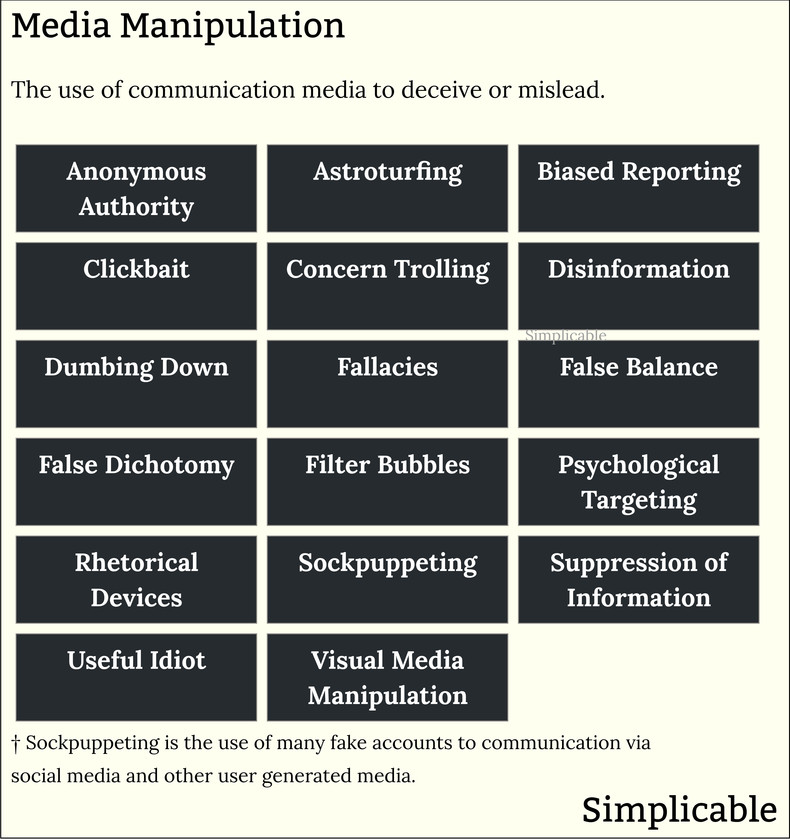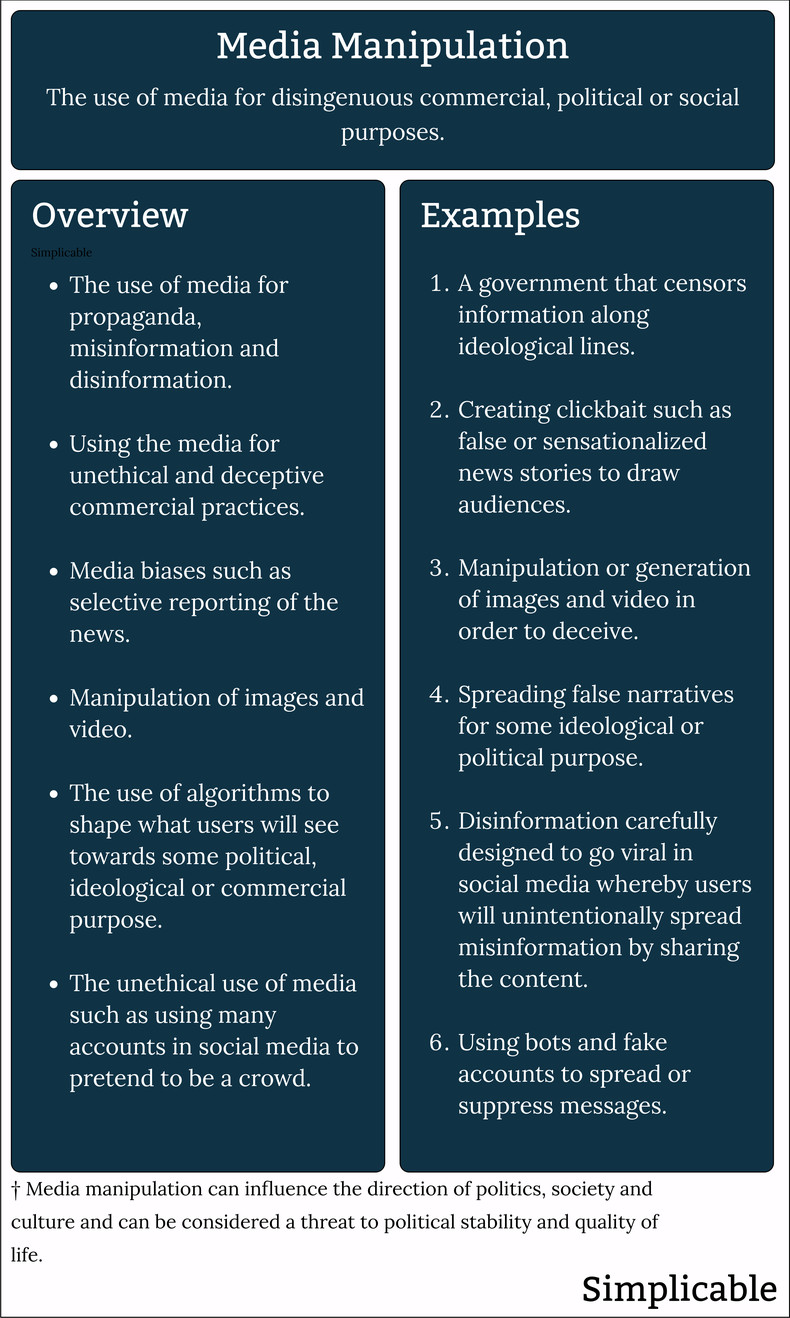
Rhetorical Devices
Rhetorical devices are known ways of influencing people. Many of these have been used for thousands of years and aren't necessarily unethical. For example, an appeal to authority or straw man argument.Biased Reporting
An organization that is ostensibly objective such as a government or newspaper that nevertheless reports information that is colored with ideology such that it resembles propaganda.Suppression of Information
An organization that has a responsibility to report information that holds it back because it doesn't benefit their agenda. For example, a government or newspaper that doesn't report findings of dangerous contamination of a water supply.Disinformation
Purposely communicating information that is false. For example, fake news reports.Fallacies
Transmitting arguments that are logically invalid such as proof by example. It is common for people to accidentally produce arguments that are fallacies. Media manipulation implies that a fallacy is knowingly produced to persuade.Dumbing Down
Oversimplifying complex issues. For example, the use of thought-terminating cliches and glittering generalities.False Dichotomy
A false dichotomy is the incorrect assertion that their are only two choices in a particular situation. These fall into familiar patterns such as us vs them.Anonymous Authority
Claiming that an opinion originates with an authority without any naming any sources. For example, "scientists say" or "experts agree."False Balance
False balance is the act of pretending that two arguments are equally valid when one is far more valid than the other. For example, "some experts say that dogs are animals that evolved on Planet Earth while other experts point out that they are most likely aliens from another world."Clickbait
Misrepresenting the content of media with titles that are designed to get clicks. This may go as far as including disinformation in a title.Astroturfing
Astroturfing is the practice of pretending that an organization or initiative is rooted in popular citizen activism when it is actually sponsored by a government, industry, organization or wealthy individual.Visual Media Manipulation
Production and distribution of fake or altered visual media such as photos and videos.Filter Bubbles
Information technology that gauges how a user thinks and then feeds them content that aligns to these views. This may cause the user to believe that their views are common or universal when in fact they are uncommon or extreme.Psychological Targeting
Using digital technologies to estimate how people think and then using this data to target messages to them.Useful Idiot
Useful idiot is the unethical practice of targeting people who have a tendency to unwittingly spread misinformation. Another common target is individuals with potential to sow discord in groups that have common interests.Sockpuppeting
Spreading disinformation from a large number of aliases. For example, a government that controls millions of social media accounts.Concern Trolling
Communicating ideas that are typical of the opposition in order to derail their efforts. This often takes the form of encouraging the opposition to adopt an increasingly extreme position that is unpalatable to the majority of people.Summary
The following are common examples of media manipulation.
Overview
Media manipulation is the use of media to deceive. This can include biases in traditional media such as newspapers and the unethical use of digital media such as social media.
| Definition: Media Manipulation | ||
Type | ||
Definition (1) | The use of communication media to deceive. | |
Definition (2) | The use of media for disingenuous commercial, political or social purposes. | |
Related Concepts | ||


































